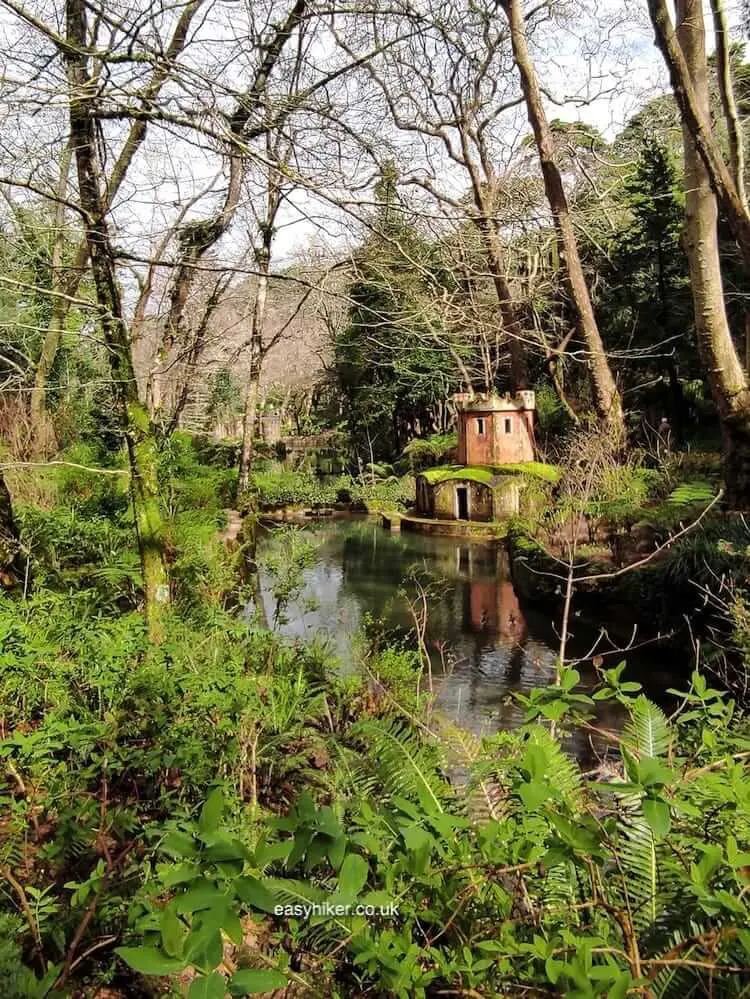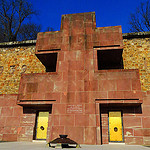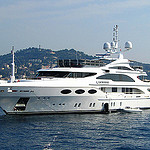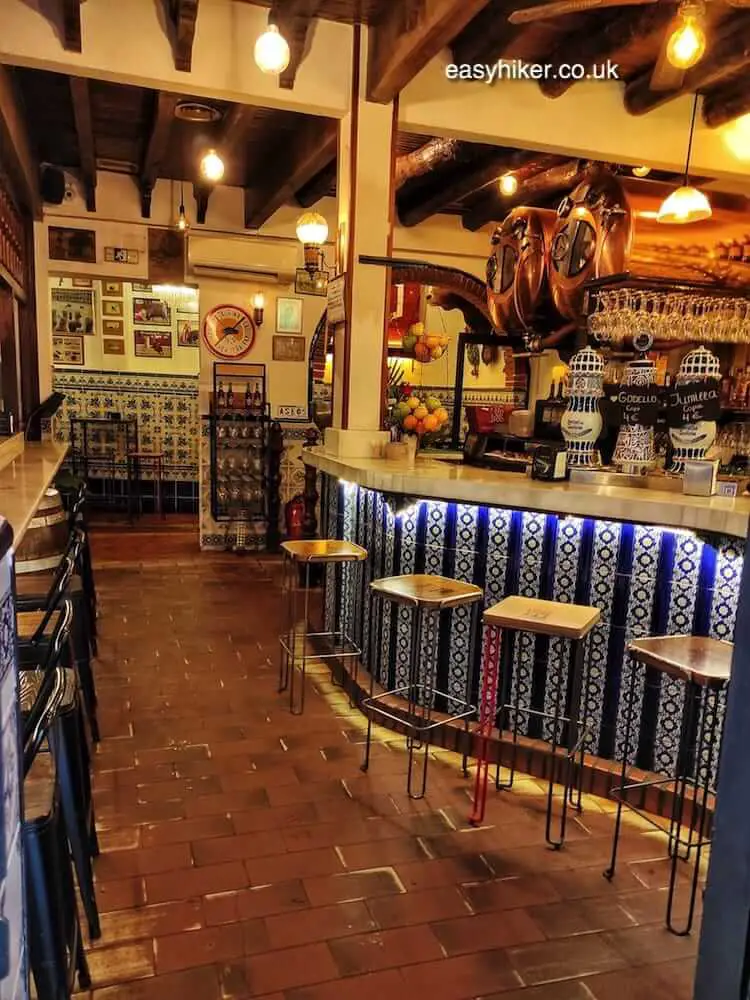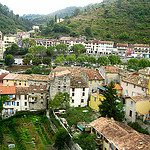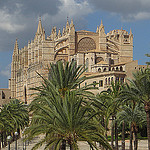Uptown and downtown Lisbon are two different worlds, and your strategy of experiencing the two unequal halves of the Portuguese capital should reflect this.
For your uptown walk on the slopes of the city we suggested last week, you should pick a starting point and an end point on opposite ends of the old town and connect the two in an improvised fashion: go this way and that way, wherever your fancy takes you, as long as you keep to the general direction.
Down by the coast, this is not the ideal way to proceed. Downtown Lisbon has two interesting parts: the Baixa quarter in the east where all the grand architectural statements from the 18th century are bunched together (everything older was destroyed by the earthquake of 1755) and the coastal Belem district in the west where you can enjoy some remains of medieval Lisbon as well as a heavy portion of wind-swept melancholy.
These two areas of interest are separated by a distinctly walkable (approx. 5 km long) but otherwise relatively uninteresting stretch. Which is why we recommend to take the tram and save your energy for higher rewards – and more romantic surroundings.

We start our walk in the centre of the Baixa, literally the “downtown” district of Lisbon, on the Rossio Square …
Downtown Lisbon
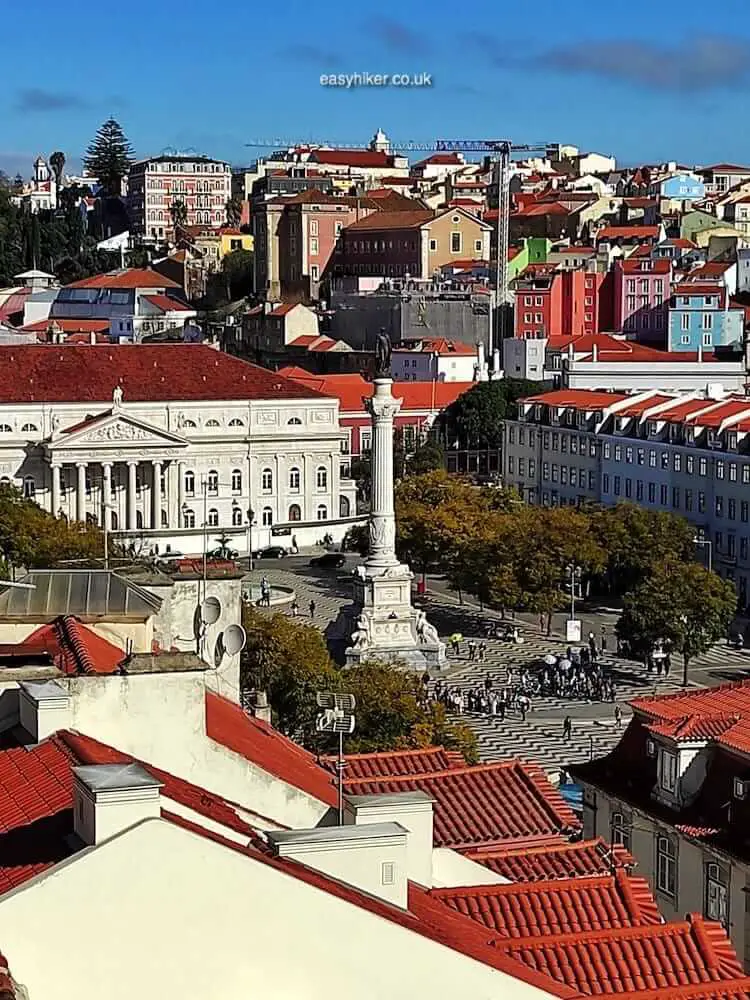
… once the hub not only of Lisbon but of Portugal’s entire colonial empire that had a wider reach than any of its contemporary rivals.
Portuguese rule once stretched from South America via Africa all the way to India and the Far East – including Japan as you will know if you have watched Shogun on TV.
Medieval Japan experienced the western world through its contacts with Portugal, and as a consequence, the Portuguese language became the source for all the words the Japanese had to invent to describe new and unfamiliar things.
Over time, many of these loan words have been replaced by English-derived loanwords: the Japanese word for “glass”, for example, used to be bidoro from the Portuguese vidro but garasu is apparently more common today. The Japanese word for an Englishman, however, is still igirisu (from the Portuguese ingles).
What the Japanese have not imported is the wave-like surface pattern of the Rossio Square, but apparently, you can find the same design in many cities across the former Portuguese Empire, from Rio de Janeiro to Macao on the coast of China.
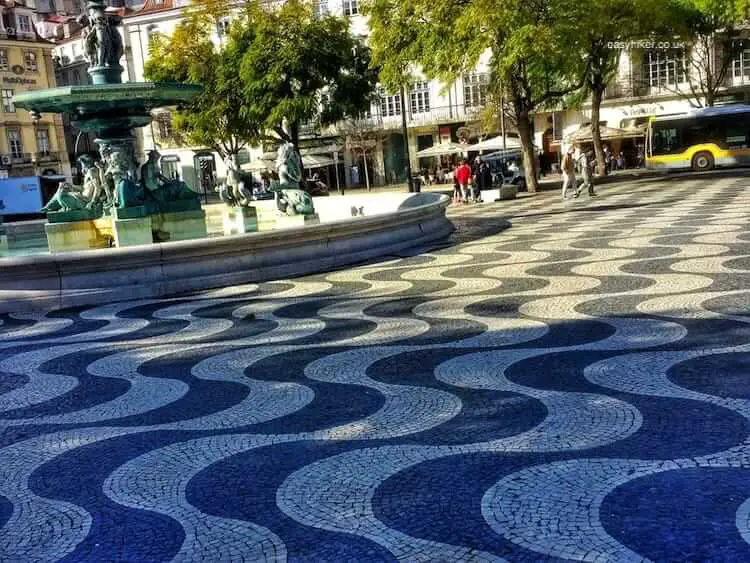
The Baixa is the area where you can tick off most of the city’s major sights (like the Praca do Comercio) …
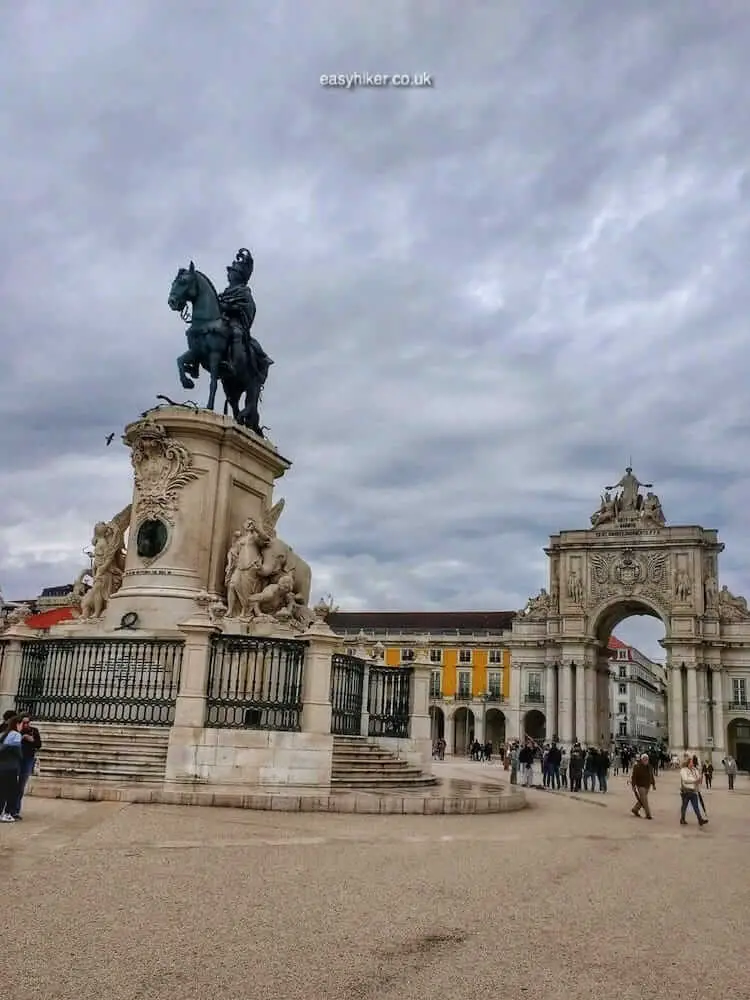
… but also the place to discover lesser known treasures such as the Terreiro do Paco, Lisbon’s ferry port terminal.
Trust the Portuguese to construct a building that confers a somber dignity upon maritime travel even if the ships from here only go to the other side of the Tagus estuary. No nation on earth, after all, can look back on a similarly august record of naval voyages and oceangoing derring-do.

On the far side of the Praca do Comercio, beyond the Arco de Triunfo, you will find the premier shopping district of downtown Lisbon.
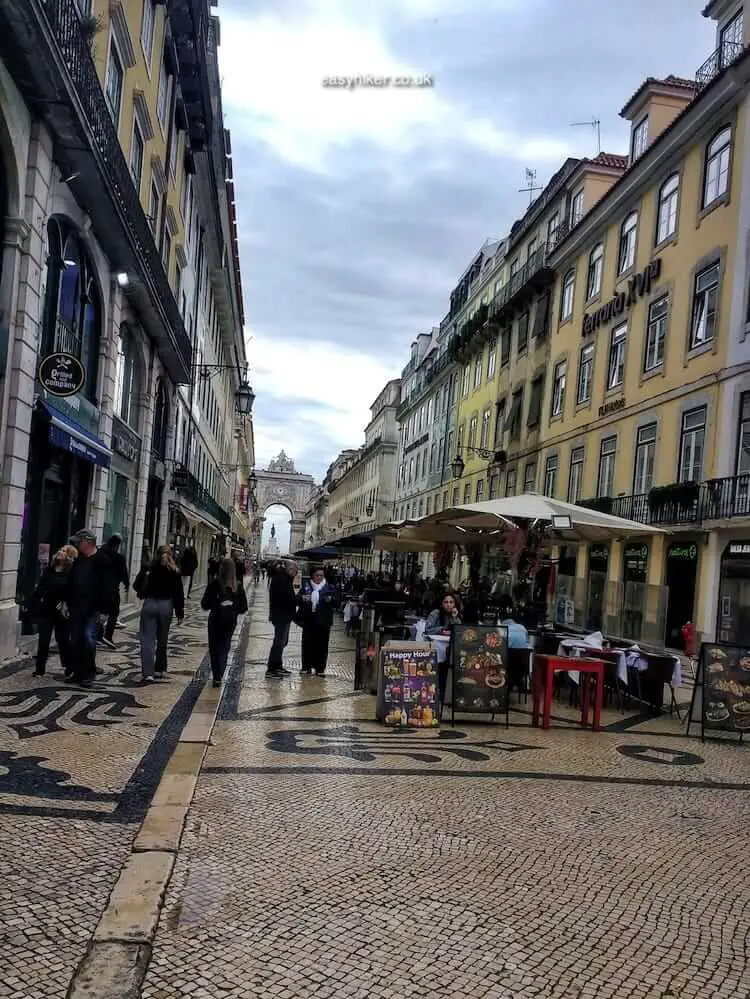
And if you, at any stage of your walk through the streets of the Baxia, feel tempted to visit the uptown quarters that hover over the coastal districts …
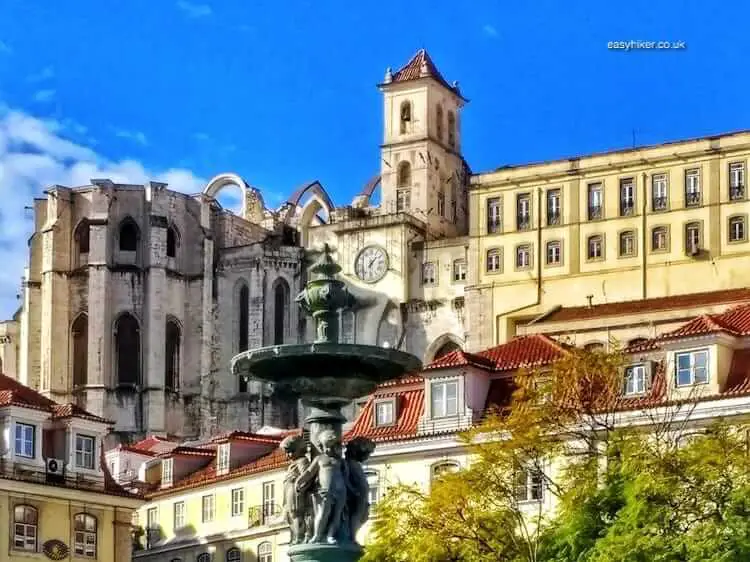
… but are too lazy to climb: take the Elevador de Santa Justa to move up one layer in the city’s architectural wedding-cake structure.
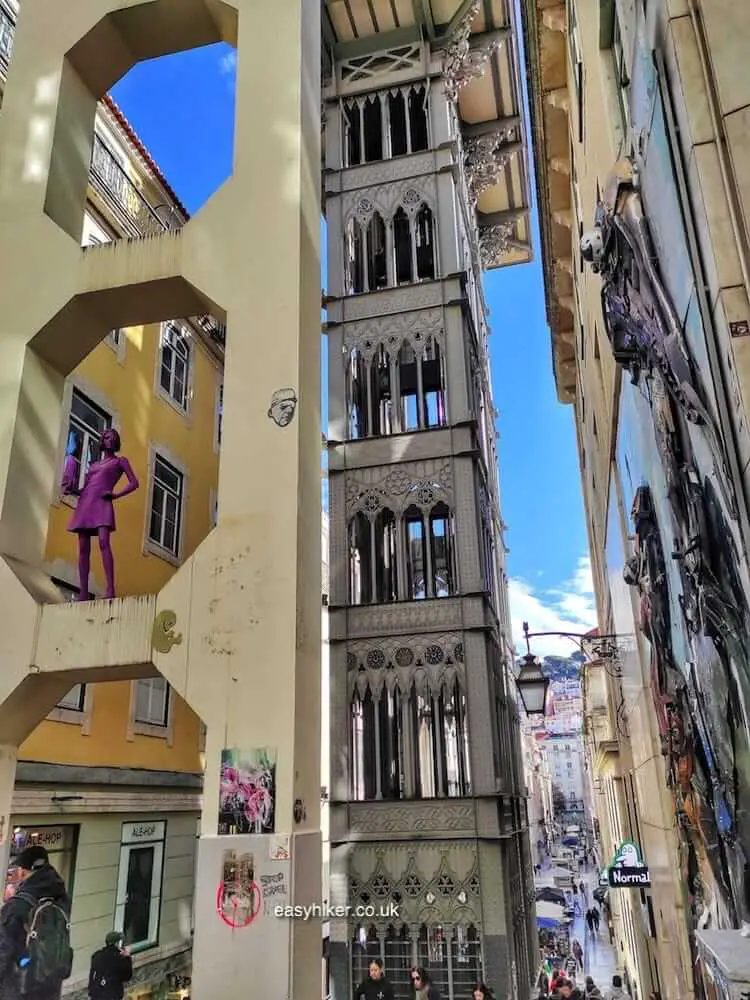
On the viewing platform at the top, you can enjoy panoramic views of the city, but the chance to take a close-up look at the filigree ironworks within the structure itself alone is worth the trip.
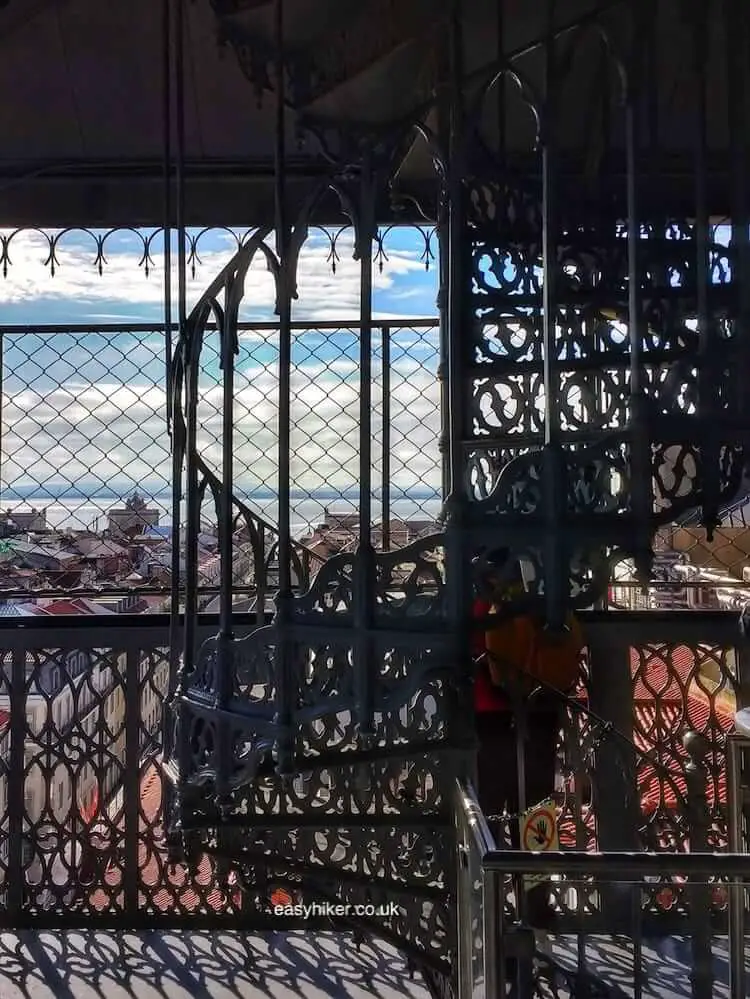
After your exploration of the Baixa quarter, walk to the waterside Cais do Sodre train station and continue westward (the water on your left hand side).
To reach Belem, you can simply follow the Rua da Junquiera for about 5 km, but we recommend to take a bus or a tram (pay inside with your credit card if you do not have a multi-ticket pass).
Leave near the Mosteiro dos Jeronimos convent to take a look at what is Lisbon’s grandest and most lavishly decorated building …
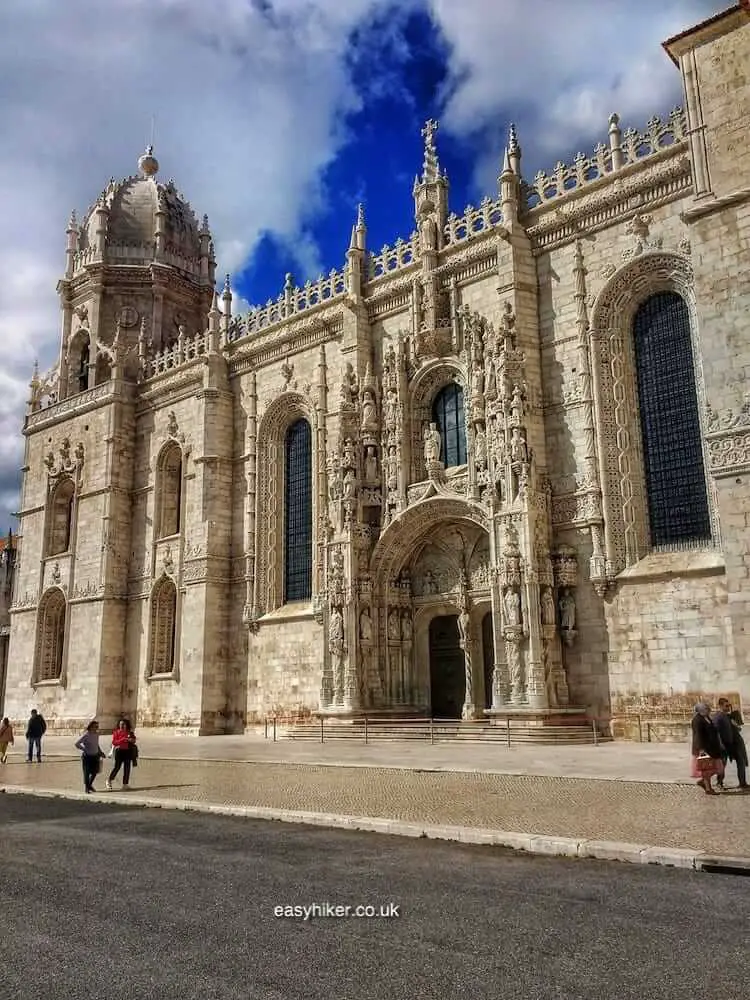
… and to buy Pasteis de Nata egg-custard tarts at the near-by Pasteis de Belem or (and?) the Fabrica Mantegaria, the city’s two leading procurers of the local specialty. We sampled both products, and while I marked this comparison down as a draw (which is just another way of saying that I could not taste any difference at all), Mrs Easy Hiker – the family expert in all things culinary – found the Mantegaria offerings slightly superior. (“More creamy”, she said – just so you know.)
You can take your Pasteis across the road for a break in the scenic environment of the Jardim Alfonso de Albuquerque …

… before proceeding to cross over to the waterside via the footbridge in front of you.
This is, I believe, the only route to reach the embankment. While the Junquieira is a busy but normal road, the street that runs parallel to it by the coast is a 6-lane highway with a railway track by its side.
Once you have made it to the waterfront, explore the Passeio do Carmo for a brief stretch on your left hand side …
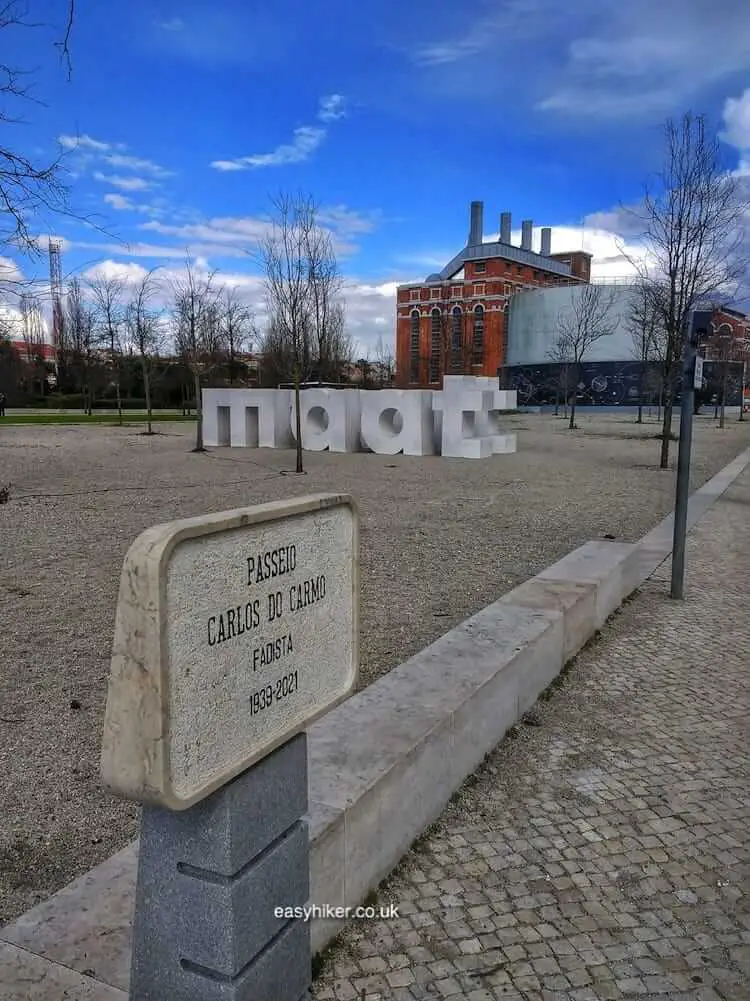
… before making your way towards the right to the Monument for the Discoveries …
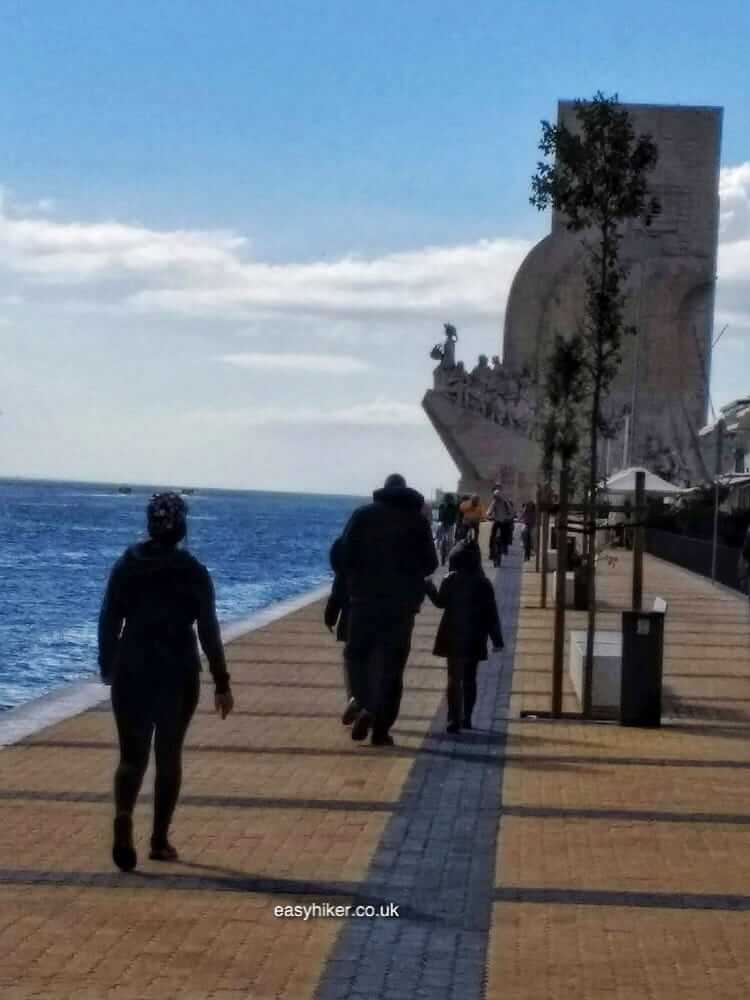
… and all the way to the Tower of Belem if you have the energy for the additional half mile.
Above all, at any rate, enjoy the view on your left hand side. This is not, strictly speaking, the Atlantic Ocean yet but merely the estuary of the River Tagus that gradually opens up into the sea.
All the famous Portuguese seafarers would have passed here on their way to the Cape of Good Hope and beyond, and this would have been, minus the odd modern detail, their final close-up view of Portugal and Europe. Perhaps the last glimpse of the old continent they would ever get: everybody on board must have been wondering if they would come back, never mind when.
Some of the most famous seafarers, after all, did not return: Bartolomeu Dias went under with four of his ships in a storm on the southern tip of Africa, Magellan was slaughtered by hostile natives in the Philippines, and Vasco da Gama died of malaria in Cochin, the Portuguese protectorate on the coast of southern India.
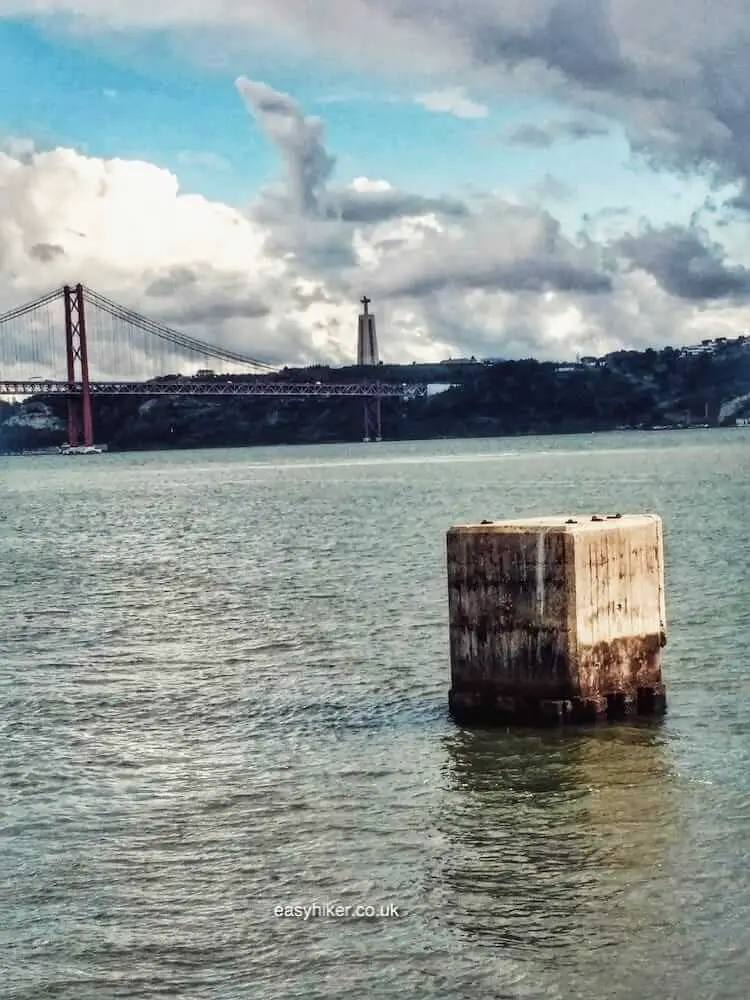
Also remember that 16th century ships were not modern jetplanes where you leave in the morning and rest your head the same night on a pillow in Delhi or Tokyo. By the time Vasco da Gama returned from his first voyage to India in 1499, he had spent more than two years away from home, including 300 days at sea. The modern equivalent to such a journey would be more like a voyage to Mars: Adventures For The Advanced.
The Easy Hikers will also be going out of town next week, although not as far away or as long. It’s just another Adventure For Beginners – join us then!
